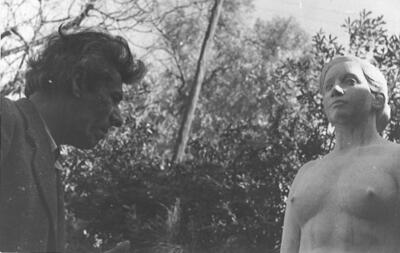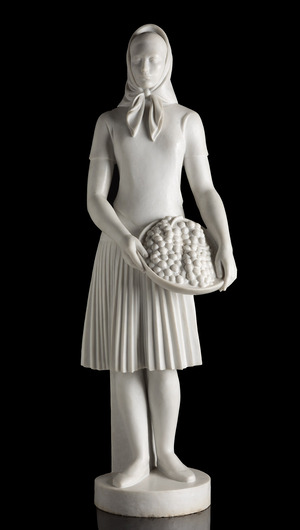Joan Rebull: the sculptor of the eternal and the classic
Through the female figure Joan Rebull, recovered the purest essence of our Mediterranean identity.
Modern sculpture, based on its two pillars -material and body- approached the representation of the human figure under the cultural and historical conditions that marked the turn of the century. In this sense, the work of Joan Rebull represents the catalyzing element that precipitated the renewal of Catalan sculptural practice in the last century, giving shape to a sculpture whose conception aspires to define what is properly Mediterranean. For this purpose, and as Torres Garcia did, Rebull will turn to the most remote past of Mediterranean civilization, taking as a model the primitive and archaic art of Mesopotamia, Egypt and Greece. This return to what is recognized as the cradle of our culture responds to the impetuous will that spread through various territories of Europe to claim and recover from the political and cultural sphere the essence and uniqueness of an identity of its own. In this aspect, Rebull is in line with the Noucentistes postulates whose aesthetics will take as a reference the ideal of Classical Greece, based on the values of order, harmony and measure, whose serene and idealized beauty refers us to a mythical reality.

The archaic classicism that Rebull’s work adopts will become the perfect vehicle through which to represent those local traditions that would give shape to a sculptural type with which the people could feel identified. Under his vision of a Catalonia heir to Classical Antiquity, Rebull was inspired by the customs and types most deeply rooted in his native land to revive the splendor of Greek civilization, giving birth to a work whose cultural and political commitment is beyond doubt. In this aspect, the female figure will acquire a remarkable prominence that will be manifested both in her role as a Mediterranean goddess and in her own personification of the values of the land.
In this way, the artist from Tarragona gave life to a sculptural type that was solid and resounding in its volumes which, in its synthetic and austere expressiveness, contained a notable symbolic charge, especially latent in female figures, which, like the one we present today, symbolize the paradigm of the style that Rebull developed.
“La Pubilla” made in Carrara marble and of which there is another version located in the Municipal Palace of Reus, is a magnificent example of the balance achieved in his work where, in a combination of the material and ethereal, the earthly and spiritual, Rebull takes us to the immutable essence of our Mediterranean origins. In fact, and even more so in figures such as the Pubilla or the Pastoreta, the strong roots of the Catalan sculptor for his land are evident, as well as the political, aesthetic and artistic commitment that he acquired with the sign of a time deeply marked by the repression of the Franco regime. In this way, the traditional Pubilla, in Rebull’s hands, becomes a modern allegory that alludes to the greatest inheritance we can receive: that of our land. The hieratism of his face, serious and serene, and the sober sensuality with which he sculpts the anatomy, places the character in a timeless plane that takes us back to the times of the lost Arcadia.
The classical spirit latent in each of his works gave birth to his own concept of Mediterranean sculpture, in which the forms of the human body and especially the female figure, conquered in Rebull’s hands a timeless, eternal and classic space. In fact, as the critic Cirici Pellicer stated in a lucid observation, Rebull was capable of “transforming the particular, characteristic and ephemeral into typical and eternal”, establishing himself as a bridge of union between the culture before and after the Spanish Civil War, which places him as the most outstanding Catalan sculptor of the middle of the last century.






